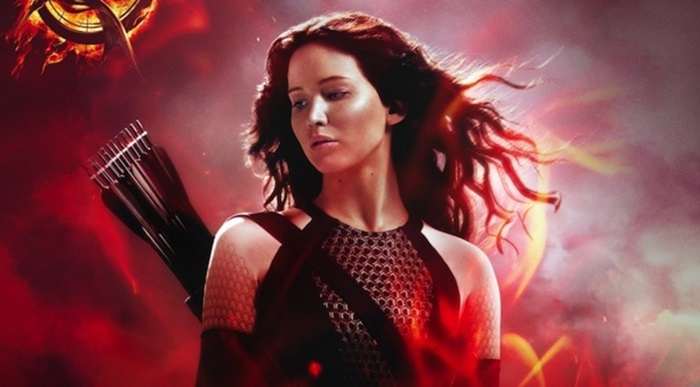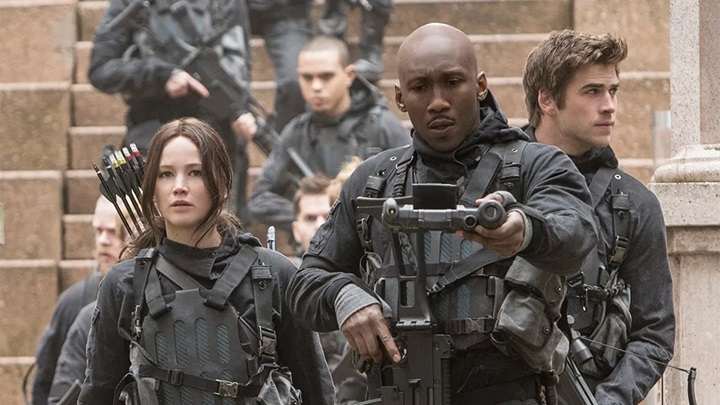The Hunger Games saga captivated audiences worldwide with its compelling story, memorable characters, and thrilling dystopian universe. The final film in the series, The Hunger Games: Mockingjay – Part 2, delivers the epic conclusion fans had been waiting for. In this article, we will dive deep into the significance of this film, discuss its central themes, explore the unforgettable performances, and reflect on why it remains a must-watch for both new viewers and long-time fans alike.
The Hunger Games: Mockingjay – Part 2
Released in 2015, Mockingjay – Part 2 is the fourth and final installment in The Hunger Games film series, based on Suzanne Collins’ globally best-selling novels. Directed by Francis Lawrence, this film brings Katniss Everdeen’s journey to a climax as she leads a rebellion against the Capitol, with her ultimate goal being to overthrow President Snow and restore freedom to Panem.
While Mockingjay – Part 1 set the stage by focusing on political intrigue and rebellion planning, Part 2 dives headfirst into the action, betrayal, and emotional drama that accompany revolution and war. It marks the end of a journey that is as much about personal growth as it is about societal change.
Plot Overview
The movie picks up immediately after the events of Mockingjay – Part 1, with Katniss (Jennifer Lawrence) recovering from a near-fatal attack by her brainwashed former ally, Peeta Mellark (Josh Hutcherson). As the war between the Capitol and the rebels escalates, Katniss decides that merely leading propaganda isn’t enough—she must personally take down President Snow (Donald Sutherland).
Joined by Gale (Liam Hemsworth), Peeta, and her loyal team, Katniss ventures into the Capitol, which has been turned into a deadly arena filled with traps, “pods,” and Capitol soldiers. Along the way, the group faces betrayal, heavy casualties, and moral dilemmas that force Katniss to question the cost of war and her role as the “Mockingjay.”
The Evolution of Katniss Everdeen: A Hero’s Journey

Katniss Everdeen’s transformation throughout The Hunger Games series is one of the most complex and engaging arcs in modern film. From a reluctant participant in the first Hunger Games to the face of a nationwide revolution, Katniss embodies the strength and vulnerability of someone forced into leadership by circumstances beyond her control.
In Mockingjay – Part 2, we see a Katniss who is deeply scarred by the horrors of war. Her struggle is no longer about survival in the Hunger Games arena but about navigating the complicated emotional and political landscape of rebellion. She wrestles with the personal toll the revolution has taken on her loved ones, especially Peeta, who remains psychologically damaged from Capitol conditioning.
Despite this, Katniss never loses her humanity. Her decision to act out of personal conviction, even when faced with overwhelming odds, is a testament to her character. She doesn’t seek fame or power; she seeks justice and peace for the people of Panem. This evolution makes her one of the most iconic heroines in cinema history.
Themes Explored in Mockingjay – Part 2
The final installment of The Hunger Games series delves into numerous complex themes, making it more than just a typical action-adventure film. The story prompts viewers to think about politics, power, morality, and the human cost of war.
1. The Morality of War
One of the film’s most prominent themes is the question of morality in war. Throughout the rebellion, Katniss grapples with the ethical implications of the revolution. She is haunted by the loss of life, both of soldiers and innocents, and the film makes it clear that in war, there are no true winners.
The film doesn’t shy away from depicting the devastation of war. For every battle won by the rebels, there are sacrifices that lead Katniss to question if the fight is truly worth the cost. Her interactions with Gale, who adopts a more militant stance, and Peeta, who struggles to reconcile his violent conditioning, showcase the film’s nuanced take on warfare.
2. Manipulation and Propaganda
In Mockingjay – Part 2, manipulation is a key aspect of the conflict. Both sides, the Capitol and the rebels, engage in propaganda to shape public perception. President Coin (Julianne Moore), the leader of the rebellion, uses Katniss as a symbol to rally the masses, turning her into a tool for her own political ambitions. The movie raises questions about how leaders use media and symbols to control people, an especially relevant topic in today’s world of mass media and political messaging.
3. Revenge and Forgiveness
Katniss’s desire for revenge against President Snow is a driving force in Mockingjay – Part 2, but the film explores how vengeance can consume a person. As she inches closer to her goal, Katniss starts to see the futility in revenge and the endless cycle of violence it perpetuates. The film asks its audience to consider when justice ends and revenge begins, and whether personal vendettas can ever lead to peace.
Her evolving relationship with Peeta also touches on forgiveness. Despite the harm Peeta caused her under the Capitol’s control, Katniss must learn to forgive him, understanding that he was a victim of manipulation. This forgiveness is key to their healing and symbolizes the possibility of moving forward after unimaginable trauma.
Key Performances: A Stellar Cast
The success of Mockingjay – Part 2 is due in large part to its exceptional cast, led by Jennifer Lawrence, whose portrayal of Katniss Everdeen is both emotionally charged and deeply authentic.
Jennifer Lawrence as Katniss Everdeen
Jennifer Lawrence delivers one of her finest performances in the final film. As Katniss, she captures the weariness, pain, and resilience of a character who has been through unthinkable trials. Lawrence’s ability to convey a full range of emotions—rage, despair, hope, and love—gives Katniss a multi-dimensionality that elevates the film beyond typical action fare. Her quiet moments of introspection are as powerful as her scenes of leadership and action.
Josh Hutcherson as Peeta Mellark
Peeta’s journey in Mockingjay – Part 2 is a heartbreaking exploration of trauma and recovery. Josh Hutcherson excels in portraying Peeta’s internal struggle, torn between his memories of love for Katniss and the mental conditioning inflicted by the Capitol. His chemistry with Lawrence remains palpable, and their scenes together are some of the most emotional in the film.
Donald Sutherland as President Snow
As the main antagonist, Donald Sutherland’s portrayal of President Snow is chilling. His calm and calculating demeanor makes him one of the most memorable villains in modern film. In Mockingjay – Part 2, Snow remains a formidable force, even as the rebellion closes in. His psychological manipulation of Katniss, right up to the film’s climactic moments, keeps the tension high until the very end.
Supporting Cast
The supporting cast, including Liam Hemsworth (Gale), Julianne Moore (President Coin), and Woody Harrelson (Haymitch), all contribute to the film’s emotional depth. Each character represents different facets of the rebellion, offering various perspectives on leadership, sacrifice, and the true cost of revolution.
Iconic Scenes and Cinematic Excellence

Mockingjay – Part 2 features several standout scenes that are not only visually stunning but emotionally resonant.
1. The Capitol’s Traps
As Katniss and her team infiltrate the Capitol, they encounter deadly traps that evoke the original Hunger Games arena. The sequence where they are pursued by “mutts” in the sewers is particularly tense and highlights the film’s excellent use of suspense and horror elements. The traps remind the audience that, even in open warfare, the Capitol still controls the battlefield.
2. The Execution of President Snow
One of the most powerful moments in the film is Katniss’s decision to kill President Coin instead of Snow. This unexpected twist reinforces the idea that the revolution was not about replacing one tyrant with another, but about true freedom. The execution scene is a perfect culmination of Katniss’s growth as a character, where she chooses justice over vengeance.
3. The Epilogue
The film’s epilogue offers a bittersweet ending. Katniss, now living in peace with Peeta, reflects on the scars left by the war but also the hope for a better future. It provides a satisfying conclusion to her journey, reminding viewers that even in the darkest times, there is the possibility of healing and rebuilding.
Why Mockingjay – Part 2 Remains Relevant Today
Nearly a decade after its release, The Hunger Games: Mockingjay – Part 2 continues to resonate with audiences. Its exploration of themes like the morality of war, the manipulation of media, and the power struggles within society feel especially pertinent in today’s world of political unrest and media-driven narratives.
The film’s emphasis on personal responsibility, as seen through Katniss’s choices, encourages viewers to reflect on their own roles in societal change. It’s a film that, while set in a fictional dystopia, offers valuable lessons about power, compassion, and the human spirit.
Related Post:
Big Brother Reindeer Games: A Winter Wonderland of Competition
2 Player Games Unblocked: The Ultimate Guide to Fun and Friendly Competition
OVO Cool Math Games: A Complete Guide to Mastering the Game
Why You Should Watch Mockingjay – Part 2
If you haven’t watched The Hunger Games: Mockingjay – Part 2, now is the perfect time to immerse yourself in its gripping story and thought-provoking themes. Whether you’re a fan of the books, the earlier films, or new to the series,


